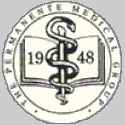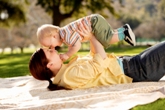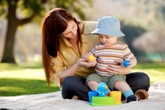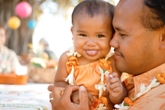|
 |
Hot Topic: Hand, Foot, and Mouth Disease
What is hand, foot, and mouth disease?
Hand, foot, and mouth disease (HFMD) is a common childhood illness that causes mouth sores and tiny blisters on the hands and feet. It is caused by types of the Coxsackie A virus and should not be confused with foot-and-mouth or hoof-and-mouth disease, which does not occur in humans.
What are the symptoms?
- Small painful sores in the mouth, especially on the tongue and sides of the mouth.
- Low-grade fever (less than 102°F).
- Small, thick-walled water blisters or red spots located on the palms of the hands, soles of the feet, and webs between the fingers and toes (in about 70% of children). The blisters may look similar to chickenpox.
- The new strain is causing a more widespread rash that can spread across the arms, legs, buttocks, torso, and face.
- In some new cases, the virus causes fingernails or toenails to fall off 10 to 14 days after infection.
Is it contagious?
Yes, HFMD spreads from person to person. Symptoms often do not appear until 3 to 6 days after exposure to the virus.
When can my child go back to school?
Your child can return to school or childcare after the fever is gone.
How can I care for my child at home?
Encourage your child to rest if he or she is not feeling well. If your child is uncomfortable, you can treat the symptoms:
For Mouth Pain:
- Rinse mouth with water.
- For more severe mouth pain, use a liquid antacid 4 times per day. For younger children, put ½ teaspoon (2 ml) in the front of the mouth 4 times per day after meals. Children over age 4 can use 1 teaspoon (5 ml) as a mouthwash after meals (spit out after rinsing).
For Fever:
If your child is uncomfortable, give acetaminophen (e.g., Tylenol) or ibuprofen for fever or severe mouth pain. Do not give ibuprofen to infants under 6 months.
Diet:
- Encourage drinking fluids (water, milk) to prevent dehydration.
- For infants, give fluids by cup, spoon, or syringe rather than a bottle.
- Avoid citrus, salty, or spicy foods, which can hurt your child’s mouth.
When should I call Kaiser Permanente?
Call us right away if your child:
- Shows signs of dehydration (very dry mouth, no tears, no urine in more than 8 hours).
- Has a stiff neck, severe headache, or is acting confused.
- Becomes worse.
- Looks or acts very sick.
Call us within 24 hours if your child has these symptoms:
- Red, swollen, and tender gums.
- Sores on outer lip.
- A fever for more than 3 days.
Please call us if you are concerned about your child’s symptoms.
For more information, review our HFMD article on My Doctor Online.
Eating and activity

Get moving
- Be a good role model for your kids by making activity fun. Dance, play, skip. They will learn to love the magic of movement.
- Little ones are just getting the hang of walking. Allow them time to practice in a safe environment with lots of encouragement.
Eat smart
- Most kids pay attention to their bodies and have a good sense of when they are actually hungry. Your job is to put healthy foods on the plate, and your child's job is to decide which ones to eat and how much to eat. Check out our tip sheet on Feeding Your Toddler.
- Focus on fiber. A 1-year-old child needs 6 grams of fiber in a day (their age plus 5). Make fiber foods safe for your young child by chopping or shredding vegetables into small pieces and slicing or smashing fruit.
Pull the plug
- Children under the age of 2 should not be getting any screen time, including television, videos, or computer screens. Children learn best by doing, not by watching. Children need direct, hands-touching, nose-smelling, tongue-tasting interaction.
- Taking the time to read with your child at least once a day can be a fun experience for both of you.
- While playpens and other partitioned areas are not ideal for extended periods, they are a fine option for keeping your little one out of trouble while you accomplish specific tasks. Make sure that you can see and hear your child at all times.
Drink Well
- How long to continue breastfeeding is a very individual choice. The general guideline is to continue as long as it is working for both Mom and baby.
- Give your child the option of milk or water only. Between the age of 1 and 2 years, a child should have about 2 cups of whole cow’s milk a day (or your pediatrician may suggest 2 percent milk if your child’s weight is too high for height). If you feel your child can’t tolerate cow’s milk, talk to your pediatrician.
- Sugary drinks have calories and no nutrition. Even 100 percent fruit juice is mostly sugar and water. The juicing process wastes most of what is nutritious in the whole fruit. Enjoy eating your fruit, skip drinking it.
Development milestones

At this time you will be seeing an explosion of new things that your baby does. They will soon develop into people who walk, talk, and play all on their own! This period of developmental growth is terrifically exciting but can be scary for you as well. Keep in mind that children develop at different rates. So, if your little one isn't doing all of these things just yet, you will likely see them soon. If you are concerned about your child's development, talk to your pediatrician at your next well-check, or send a secure message with your question.
Most children at this age can:
- Say mama and dada and a few other simple words.
- Wave bye-bye when someone leaves the room, often with a sweet backwards hand – they wave as they see with the palm facing them.
- Stand alone, perhaps a bit wobbly.
- Play pat-a-cake or clap with you.
- Drink from a cup.
Your child may be ready to:
- Walk holding on to furniture or may even have taken her first wonderful steps.
- Look for dropped or hidden objects – perhaps her next word will be uh-oh.
- Play peek-a-boo and laugh all the while.
- Say 1 to 3 words and imitate sounds.
- Point with fingers.
- Start scribbling with crayons. Look out walls!
You can find more information about your child's development on kp.org.
Successful parenting

An advertisement for your position as parent would include a long description of your duties. It might begin something like this, Wanted: one tireless, endlessly kind, and patient teacher. After all, much of what you do is teach your child all day. You are teaching her how to behave, how to talk, and how to interact with others.
As you go through the day, look for opportunities to help your child learn. Take her for a walk and talk about what you see: “Look at the pretty flowers. The flowers are yellow. The flowers smell pretty!” This has been called "teaching through sports-casting." You don’t need to ask your child to repeat words and names but, you can model the words repeatedly and enthusiastically. She will soak them up, especially if you combine the sports-casting with touching and smelling.
Some people wonder if they can spoil their children. Loving a child cannot spoil her. Children thrive when loved everyday. They do best when hugged and snuggled. It is good for them to hear many more positive than negative things about themselves. Treating your child with warmth teaches her self-esteem and prepares her to go forward in life and treat others well also.
Your support also gives her the strength to start exploring the world on her own. At 13 months, children start to learn more about the world around them, and begin to develop some new skills (like walking) that give them some independence from you. This becomes a crucial time for you to give your child lots of support and love. That way, she feels secure and is able to take those first steps away from you, while knowing that you are nearby and ready to catch her if need be.
However, along with this love you need to clearly let her know her limits and your expectations. You can’t love your child too much but you can hurt her by not disciplining her well. To learn more, check out this article about appropriate discipline by the American Academy of Pediatrics.
Weaning your child

If you are breastfeeding, deciding when to wean your child from the breast is a very individual decision that needs to take into account both your child’s desires, as well as your own. The American Academy of Pediatrics breastfeeding recommendations include feeding breast milk only for the first 6 months and support for breastfeeding for the first year and beyond, as long as mutually desired by mother and child. You should know that whenever you decide to wean your child, whatever breast milk he received was beneficial for his growth and development.
There are some advantages to beginning the weaning process between 1 and 2 years of age. Your child may be less resistant to weaning during this time and is less likely to develop dental issues in the long-term. Regardless of age, the process of weaning can be challenging.
Go to kp.org for more information, including tips and guidelines, about: